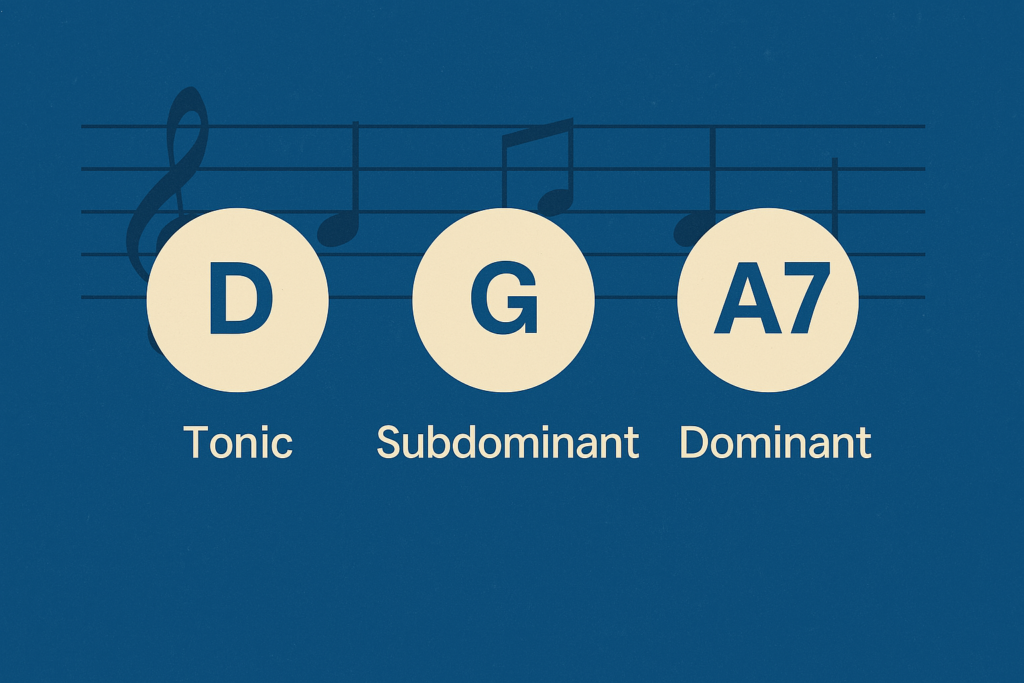In music, some chords just fit together naturally. This is thanks to harmonic functions like tonic, subdominant, and dominant — and when you learn them in a key like D Major, you unlock the foundation of thousands of songs.
Let’s break it down step by step.
🎼 What Are Tonic, Subdominant, and Dominant Chords?
These three chords are part of the I–IV–V progression, one of the most common chord sequences in Western music.
Here’s how they function:
- Tonic (I) – The “home” chord. It feels resolved and calm.
- Subdominant (IV) – Adds movement and direction.
- Dominant (V) – Creates tension and leads back to the tonic.
🔢 Scale Degrees in D Major
There are specific ways to which we refer to particular notes on a scale. This is known as scale degrees. Each scale degree provides a position of the specific note in relation to the main note of the scale otherwise known as the tonic. The tonic as the main note, can be considered as the first note or I. Here is a brief list of the notes and scale degrees corresponding to them:
- Tonic (I)
- Supertonic (II)
- Mediant (III)
- Subdominant (IV)
- Dominant (V)
- Submediant (VI)
- Subtonic (VII)
We will be making use of the roman numerals when referring to progressions. The progression of chords that will be played in this lesson is I, IV & V (being the Tonic, Subdominant, and Dominant).
To build these chords, we look at the D major scale:
D – E – F# – G – A – B – C# – D
| Scale Degree | Function | Roman Numeral | Chord |
|---|---|---|---|
| 1st note | Tonic | I | D |
| 4th note | Subdominant | IV | G |
| 5th note | Dominant | V | A (or A7) |
🎸 Chords in D Major (I–IV–V)

The basic I–IV–V progression in D major is:
D (I)
G (IV)
A7 (V)
You can strum these in the following sequence:
- 1 measure of D
- 1 measure of G
- 2 measures of A7
A measure simply refers to a rhythmic unit — in this case, each measure could have six strums or beats depending on the rhythm you’re using.
Note: A measure is following a series of strums corresponding to the rhythm being played. In this case, each measure has six strums
I, IV and V Progression of D Major
See this progression played live on the Cuatro Venezolano:
✅ Why This Progression Matters
The I–IV–V progression is the building block of countless songs across genres like folk, pop, blues, country, and joropo.
By understanding these functions in D major, you can:
- Improvise confidently
- Accompany singers
- Write songs
- Transpose to other keys easily
Now that you understand tonic, subdominant, and dominant in D major:
- Explore how this pattern shows up in your favorite songs
- Practice switching between D, G, and A7
- Try using this sequence to back up a simple melody
Want to go deeper?
👉 Register for free at TuCuatro and access full lessons on chord theory, rhythm patterns, and Cuatro techniques.


